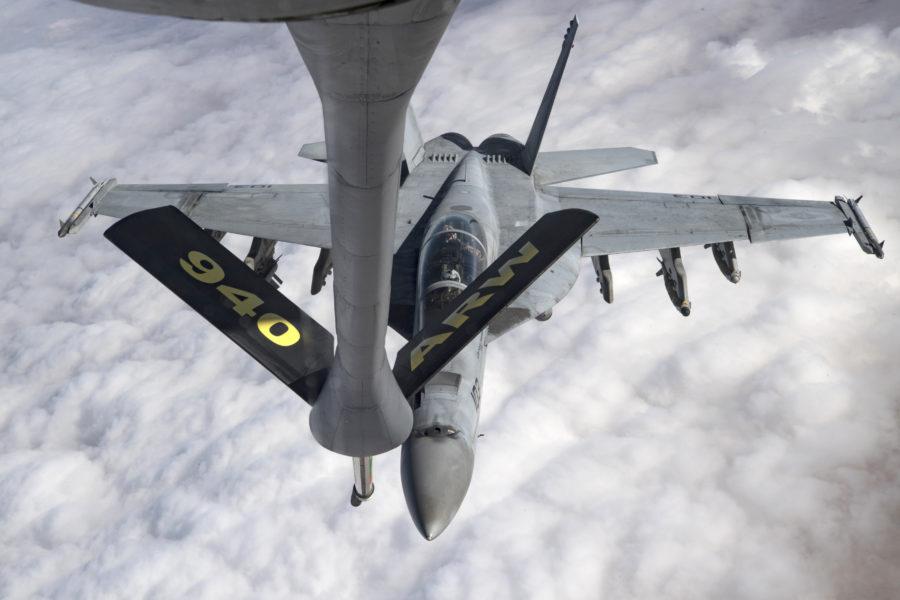U.S. defense strategy anticipates increasingly joint operations in which Air Force jets, Navy ships and submarines, and Army and Marine Corps ground operations are so tightly integrated that rival forces will be overwhelmed. But to fight that way, the armed services must first train and practice, leveraging live, virtual, and constructive simulation elements to master the art of the possible – and they must be sure those systems are built with cybersecurity in mind.
HII has been working these problems for decades. HII’s development and operation of the Navy Continuous Training Environment (NCTE), the Navy’s Live, Virtual, and Constructive (LVC) Training Program, provides scalable Government-owned solutions that facilitate unit- to fleet-wide, joint, and coalition training. HII is leveraging these solutions with their existing USAF DMO and range programs to achieve best of breed training architectures, providing DoD with a viable framework for Joint All Domain Operations training.
“The more we interconnect advanced training and weapons systems into a single environment, the greater the value of the data in the environment,” said John Bell, technical director of HII’s LVC Solutions Group. And the value doesn’t just rise for the Department of Defense, but to potential adversaries seeking an edge in future combat. “We recognize that as a critical consideration in our development of new simulation and training systems,” Bell said. If it’s digital, someone is going to try to hack it, so protecting the enterprise training solution is a primary concern.
“Protecting data is a major challenge,” Bell said. “It’s one of our highest priorities for our DOD customers, so we follow advanced cybersecurity engineering and architecture processes. We’re constantly working on new ways to secure our systems to ensure they’re protected.”
The Navy’s Enterprise Network Guard is a key part of that strategy, a cross-domain solution to connect classified information across multiple enterprise training networks for the Navy.
“The Enterprise Network Guard provides new capabilities that we don’t have in traditional cross-domain solutions,” Bell said. “HII has been conducting site certification and testing of the Guard by integrating and sharing data securely with our coalition partners in the NCTE.”
The Enterprise Network Guard is on track to become certified by the National Security Agency as a “Raise the Bar”-compliant cross-domain solution (CDS).
“’Raise the Bar’ is a new set of requirements for cross domain solutions to improve security and prevent the inadvertent disclosure of data,” Bell said. “We recently completed successful site-testing of the Enterprise Network Guard, which is significant because it proves the Guard meets Raise the Bar standards and is ready for use in distributed joint and coalition training exercises.”
According to Bell, the Enterprise Network Guard is well-suited to be a future cross-domain solution for the Air Force and other services.
“There are significant challenges that come with integrating multiple levels of security, from multiple domains and for a variety of training systems across networks,” Bell said. “This is one of the biggest challenges facing the Air Force today and our experience working with the Guard gives us the capabilities, insights, and experience needed to address those challenges.”
HII is also experienced in integrating live training ranges into a single enterprise solution for networking and communications. Recently, HII has been upgrading current USAF range architecture to an interconnected enterprise range infrastructure.
“Currently, the Air Force’s live training ranges are operating under legacy networks and legacy communication systems,” Bell said. “We’re applying our proven enterprise training architecture to the Air Force by integrating their live training ranges into a Live Mission Operations Network (LMON). This will enable the Air Force to train more effectively by bringing in the new live range training systems of the future with advanced platforms such as the F-35 and other fifth-gen fighters.”
An enterprise network for the Air Force’s Live Mission Operations Network will enable greater efficiency in operations because it can be run from a single network operations and security center.
“Our standardized solutions optimize the hardware and software at every range to meet individual requirements, while not having to reinvent the wheel at every single range,” Bell said. “This demonstrates that we can leverage our open architectures and standards to develop enterprise solutions that are applicable across the globe, both at-scale and for immediate use.”
HII has experience working with Air Force platforms, having already integrated the B-1, B-52, E-8C Joint STARS, E-3 AWACS, and RC-135 Rivet Joint into NCTE exercises.
“The integration of Air Force platforms into NCTE exercises was effective because we used our Joint Simulation Bus (JBUS) system to create interoperability capabilities between the platforms,” Bell said. “The Navy and the Air Force now routinely train in joint exercises using both Air Force and Navy assets, just like we would in war. This experience gives us insight into what it takes to bring multiple Air Force platforms into a single integrated environment that enables Joint All Domain Operations of the future.”

